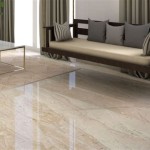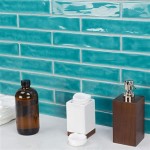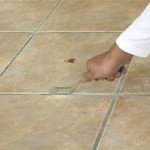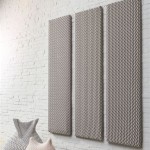How Much Does It Cost To Install Tiles?
The cost of installing tiles is a complex calculation influenced by several interconnected factors. Determining a precise figure necessitates careful consideration of the tile material, the size and complexity of the installation area, the existing surface conditions, labor rates, and any necessary preparatory work. This article provides a comprehensive overview of the cost components involved in tile installation, offering a framework for understanding and estimating the potential expense of a tiling project.
Understanding the breakdown of these costs is crucial for budgeting purposes. Homeowners and property managers can use this information to make informed decisions regarding tile selection, project scope, and contractor selection. A clear understanding of the cost drivers also allows for more effective negotiation with contractors and minimizes the risk of unexpected expenses during the installation process.
Tile Material Costs
The primary cost driver in any tiling project is the material itself. Tile prices vary dramatically depending on the type, quality, size, and design. Ceramic tiles, generally the most affordable option, can range from $1 to $5 per square foot. Porcelain tiles, known for their durability and water resistance, typically cost between $3 and $10 per square foot. Natural stone tiles, such as granite, marble, and slate, are the most expensive, with prices ranging from $5 to $50 or more per square foot.
Specialty tiles, including glass, metal, and mosaic tiles, also command higher prices due to their unique aesthetics and complex manufacturing processes. Glass tiles can range from $8 to $30 per square foot, while metal tiles can be even more expensive. Mosaic tiles, often intricate patterns composed of small individual pieces, can cost anywhere from $7 to $50 per square foot, depending on the materials and the complexity of the design.
Beyond the tile itself, additional materials are necessary for a successful installation. These include thin-set mortar, grout, sealant, backer board (if required), and any necessary cleaning and finishing products. The cost of these materials can add significantly to the overall project budget, typically ranging from $0.50 to $2.00 per square foot, depending on the specific products used and the size of the installation area. Choosing high-quality setting materials is paramount for a long-lasting and aesthetically pleasing tile installation. Savings made on the cost of materials can be swiftly outweighed by the cost of rectifying a failed installation, so the use of reputable products is a cost-effective method.
Labor Costs
Labor costs represent a significant portion of the total expense of tile installation. Labor rates vary based on geographic location, the complexity of the project, and the experience and skill of the installer. Generally, professional tile installers charge between $4 and $14 per square foot for their services. This rate typically includes the preparation of the surface, the laying of the tiles, the grouting, and the cleaning.
More complex tile installations, such as those involving intricate patterns, custom cuts, or installations on challenging surfaces, will command higher labor rates. For example, installing mosaic tiles or tiles with complex geometric patterns requires greater skill and precision, resulting in increased labor costs. Similarly, installing tiles on uneven or damaged surfaces necessitates additional preparation work, which will also impact the overall labor expense.
It is critical to obtain multiple quotes from different tile installers and to carefully review their qualifications and experience. Choosing a qualified and experienced installer is crucial for ensuring a high-quality installation and avoiding costly mistakes. Request references and examples of previous work to assess the installer's skill and attention to detail. While aiming for the lowest price is understandable, prioritizing expertise and a proven track record is more likely to save money in the long term. Poor installation work can generate costs much greater than the initial savings, so paying close attention to the credentials of the company or professional conducting the work is crucial.
Surface Preparation and Additional Costs
The condition of the existing surface plays a critical role in determining the overall cost of tile installation. If the surface is uneven, damaged, or not properly prepared, additional work will be required to ensure a smooth and stable base for the tile. Surface preparation can include removing old flooring, patching cracks and holes, leveling the surface with self-leveling compound, and installing backer board.
Removing existing flooring can add significantly to the project cost, particularly if it involves challenging materials like old tile, linoleum, or carpet. The cost of removing old flooring can range from $1 to $5 per square foot, depending on the material and the complexity of the removal process. Patching cracks and holes in the subfloor may cost between $50 and $200, depending on the extent of the damage.
Installing backer board, a cement-based board that provides a stable and water-resistant surface for tile, is often necessary in wet areas like bathrooms and kitchens. Backer board installation typically costs between $0.50 and $2.00 per square foot. Other potential additional costs include disposing of old materials, moving furniture, and making any necessary plumbing or electrical modifications. These extra costs can add a significant amount to the total costs of the tile installation. It is essential to discuss these costs and plans in advance with the tile installation company in order to prevent any unpleasant surprises concerning the total amount owed.
The size and complexity of the project also influence the overall cost. Larger projects will naturally require more materials and labor, resulting in higher costs. Complex layouts involving intricate patterns, custom cuts, or installations in difficult-to-reach areas will also increase the labor expense. Furthermore, features like backsplashes, shower niches, or custom borders will add to the overall project cost.
Regional variations in labor rates and material costs can also affect the total cost of tile installation. Labor rates tend to be higher in urban areas and regions with a high cost of living. Similarly, material costs may vary depending on the availability of suppliers and the demand for specific tile types. Obtaining quotes from local contractors and suppliers is crucial for obtaining accurate cost estimates for a specific location.
The necessity of permits should not be overlooked. Depending on the scope of the project and local building codes, obtaining permits may be required. The cost of permits can vary widely depending on the municipality and the type of work being performed. Failing to obtain necessary permits can result in fines, delays, and even the need to redo the work. It is prudent to check with the local building department to determine whether permits are required for the tiling project.
Contingency funds are an essential aspect of any home improvement project, including tile installation. Unexpected issues can arise during the installation process, such as hidden damage to the subfloor or unforeseen complications with the plumbing or electrical systems. Allocating a contingency fund of 10-15% of the total project budget can help cover these unexpected expenses and prevent budget overruns. This contingency fund can be useful for any adjustments that need to be made to the costs or to the materials during the project. These funds are for the unknown aspects of the project and are necessary for a successful tile installation.
Proper maintenance and care are essential for prolonging the life of a tile installation. Regular cleaning and sealing can help prevent staining, cracking, and other damage. The cost of maintenance products and services should be factored into the overall budget for the tiling project. Regularly sweeping or vacuuming the tile to remove dirt and debris is imperative, along with mopping with a neutral pH cleaner. Periodic sealing of the grout lines can help prevent water penetration and staining. Addressing any cracks or chips promptly can prevent further damage and costly repairs.

Fixr Com Tile Flooring Installation Cost Floor S

How Much Does Tile Installation Cost 2024 Guide

What Is The Average Cost To Install Tile Floors Rubi Blog Usa

A Complete Guide To Ceramic Tile Installation Costs In 2024 Forbes Home

2024 Ceramic Tile Installation Cost A Complete Guide

Fixr Com Ceramic Tile Flooring Installation Cost

How Much Does It Cost To Install Tile Bankrate

Average Bathroom Tile Installation And Retiling Cost Forbes Home

Fixr Com Tile Flooring Installation Cost Floor S

How Much Does Tile Installation Cost 2024 Guide
Related Posts








